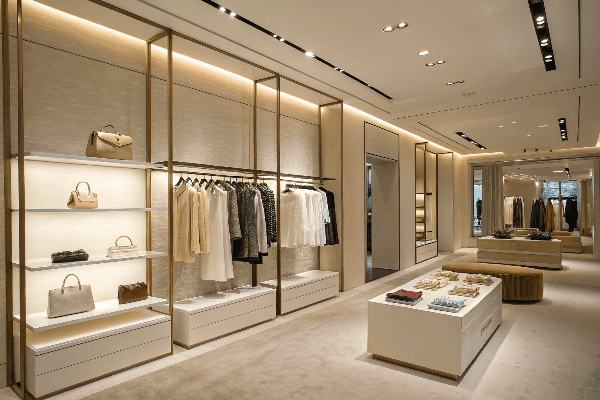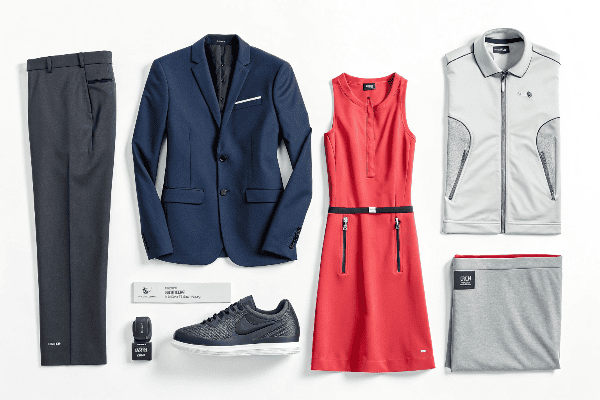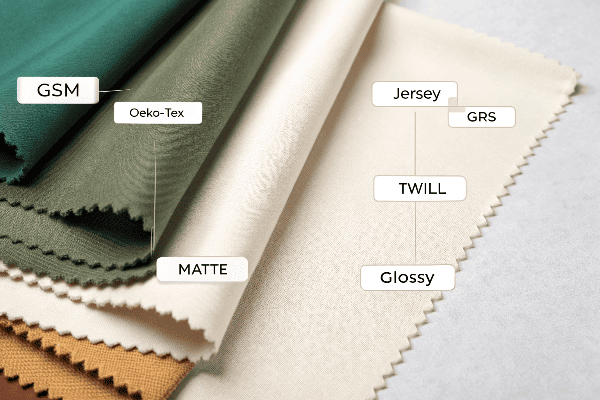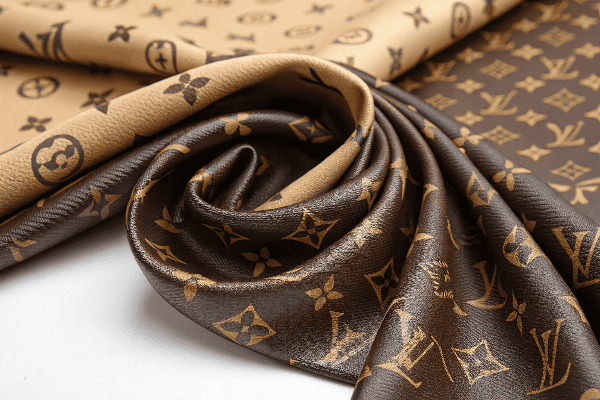Are you struggling to decide if polyester fits your brand’s quality and sustainability goals? This fabric offers versatility but comes with critical considerations for fashion designers.
Polyester is widely used in fashion for its durability and cost-effectiveness. To choose the right type, focus on fabric weight, finish, and sustainability certifications1. Even luxury brands like Louis Vuitton use polyester blends strategically for specific designs.

Understanding polyester’s role in modern fashion requires digging deeper. Let’s explore its use across brands and how to select the best options for your collections.
Do Designer Brands Use Polyester?
Many assume luxury brands avoid synthetic fabrics, but polyester’s practicality challenges this perception.
Yes, designer brands use polyester—especially in performance wear, linings, and blended fabrics. It offers wrinkle resistance, color retention, and affordability, making it a strategic choice for specific garment types.

The Reality of Polyester in High-End Fashion
Designers balance aesthetics, functionality, and costs. Here’s how polyester fits into luxury fashion:
| Brand Category | Polyester Use Case | Example |
|---|---|---|
| Luxury Apparel | Blends for structured jackets or stretch dresses | Balmain’s polyester-elastane dresses |
| Sportswear | Moisture-wicking activewear | Lululemon’s performance leggings |
| Accessories | Durable linings for handbags or shoe interiors | Prada’s reinforced bag linings |
Polyester’s reputation suffers from fast fashion associations, but its technical variants (e.g., recycled PET2 or microfiber) appeal to eco-conscious designers. I once worked with a client who insisted on “natural fabrics only” but later adopted recycled polyester for swimwear—it outperformed cotton in durability and color vibrancy.
Critics argue polyester lacks luxury appeal, but innovations like textured weaves or silk-like finishes are changing perceptions. The key is transparency: brands like Stella McCartney openly use recycled polyester, aligning with sustainability narratives.
How to Choose Polyester Fabric?
Selecting polyester isn’t just about cost—it’s about matching fabric properties to your design vision.
Evaluate polyester based on weight (gsm), weave type (e.g., jersey, twill), and finish (matte, glossy). Prioritize OEKO-TEX® or GRS-certified fabrics for eco-friendly collections.

A Step-by-Step Fabric Selection Guide
Use this framework to avoid costly mismatches:
-
Define the Garment’s Purpose
- Activewear: Opt for moisture-wicking, 4-way stretch polyester (e.g., 90% polyester + 10% spandex).
- Eveningwear: Choose lightweight, satin-finish polyester with draping qualities.
-
Check Certifications
- GRS (Global Recycled Standard): Ensures recycled content.
- OEKO-TEX®: Confirms no harmful chemicals.
-
Test Fabric Behavior
- Printability: Does it hold digital prints without fading?
- Drape: Stiff polyester works for blazers; fluid types suit dresses.
| Fabric Type | Best For | Drawbacks |
|---|---|---|
| Recycled PET | Eco-friendly outerwear | Limited color brightness |
| Microfiber | Soft lingerie | Requires delicate washing |
| Poly-Spandex Blends | Athletic wear | Higher cost than 100% polyester |
A client once ordered a glossy polyester for workout gear, only to realize it trapped sweat. We switched to a mesh-backed variant, proving that functionality must trump aesthetics.
Does Louis Vuitton Use Polyester?
Luxury brands like Louis Vuitton prioritize craftsmanship, but polyester still plays a role.
Yes, Louis Vuitton uses polyester blends in linings, trims, and select ready-to-wear pieces. However, they pair it with premium materials (e.g., leather, silk) to maintain luxury standards.

Polyester in Luxury Goods: A Closer Look
Louis Vuitton’s use of polyester reflects smart material engineering:
- Handbag Linings: Thin, durable polyester protects interiors without adding bulk.
- Embellishments: Polyester threads in embroidery resist fraying.
- Raincoats/Trench Coats: Water-repellent polyester blends offer weather resistance.
Critics argue this dilutes brand value, but LV balances it with:
- Material Hybridization: Pairing polyester with calfskin or exotic leathers.
- Craftsmanship Focus: Attention to stitching and finishing distracts from “synthetic” labels.
| Product Category | Polyester Usage | Luxury Countermeasure |
|---|---|---|
| Handbags | Lining fabric | Full-grain leather exteriors |
| Apparel | Blended outerwear | Silk-lined interiors |
| Accessories | Embroidered logos | Hand-stitched detailing |
While LV avoids 100% polyester in flagship products, its strategic use highlights a industry truth: even luxury brands leverage synthetics for functionality.
Conclusion
Polyester is a versatile tool for fashion brands when chosen thoughtfully. By prioritizing certified, purpose-driven fabrics, you can balance quality, sustainability, and cost-effectiveness.


